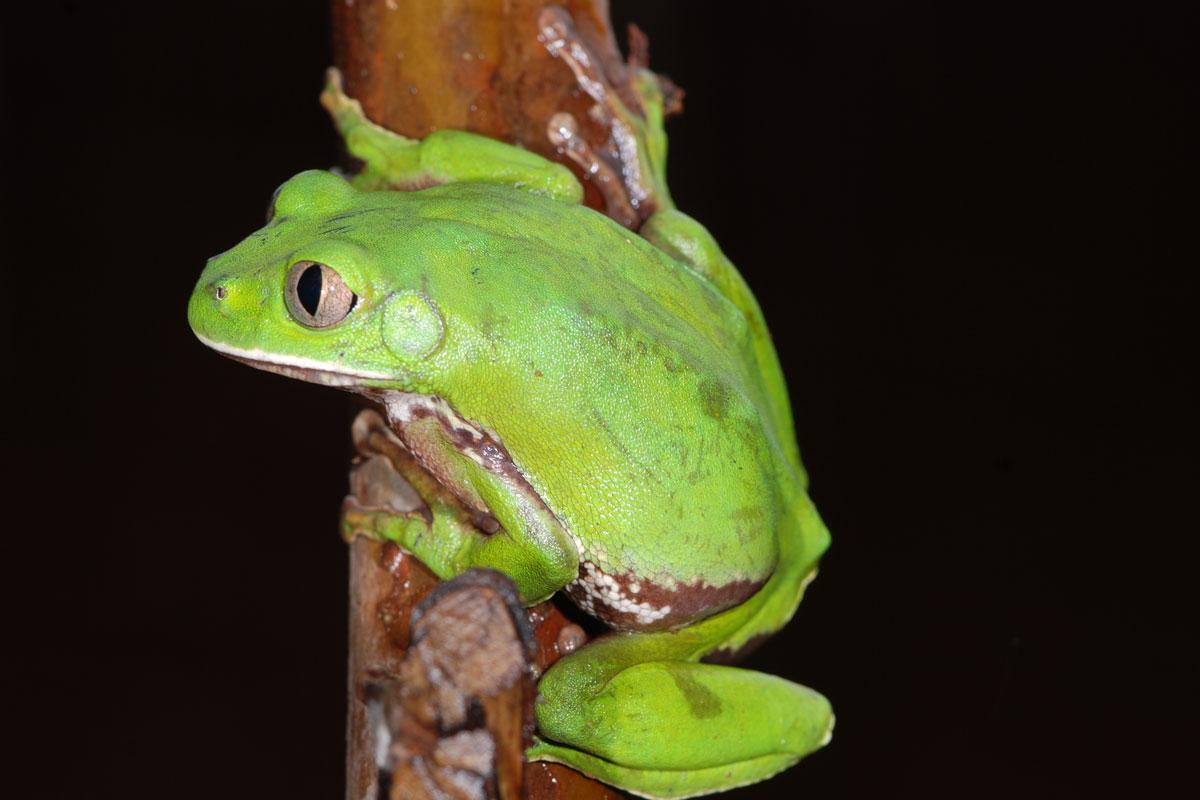Which frogs, toads, blindworms and salamanders are there in Africa? No matter if you are a researcher or a layperson, you can determine the species quickly and easily with the first amphibian field guide, which was created by Mark-Oliver Rödel, scientist at the Museum für Naturkunde Berlin, together with a colleague from South Africa. The book is also intended to provide more information about African amphibians and thus help against amphibian extinction.
The very first comprehensive field guide gives an overview of 788 species of frogs and toads, 23 species of blindworms and four species of salamanders. The scientists Mark-Oliver Rödel from the Museum für Naturkunde Berlin and Alan Channing from the North-West University in Potchefstroom, South Africa, have joined forces. The aim is to make the diversity of amphibians on the African continent accessible to researchers, students, laymen, park rangers and tourists through the "Field Guide to the Frogs and other amphibians of Africa". The book makes it possible for the first time to quickly determine the individual species. A lengthy research work is no longer necessary. This is usually impossible, especially for many African students with no or only poor access to international literature. For each species there are one or more photos, a short description of the most important determinants, the biology and the habitat as well as a distribution map, as far as known. In particular, the reference to missing information is intended to stimulate one's own observations. In addition, there are many useful tips for field research.
"With this book we hope to be able to contribute to the fact that a broader mass of scientists, but also laymen, are interested in African amphibians," says Mark-Oliver Rödel, scientist at the Museum für Naturkunde Berlin, and adds: "Through a growing awareness of the different species and habitats, amphibians can ultimately be better protected. South African zoologist Alan Channing adds: "So far, African amphibians have been among the least researched species in the world.
The two scientists are fascinated by Africa's amphibian diversity. For example, the red rubber frog, Phrynomantis microps, lives in the savannahs of West Africa, where there are dry seasons lasting up to six months. Since the frogs cannot dig, they have to use other damp hiding places to survive this time. In order to survive in the colonies of carcass ants over two centimetres in size and to remain invisible to their owners, the frog produces and distributes two special proteins on its skin. Another frog with "super powers" is the chalk frog, Hyperolius nitidulus, which changes colour from brown to white at temperatures above 35 degrees Celsius in order to reflect the sun's rays and thus not overheat. However, the biology of most amphibian species in Africa is still unknown. The authors believe that there are many more spectacular adaptations to be discovered.
Even the number of species is far from being recorded. Rödel estimates that there are twice as many amphibian species in Africa as are known to date. "We can hardly say how bad the amphibian extinction in Africa is, because there are hardly any old data with which we can compare today's data. Hopefully, this will change in the future as a result of our book of determinations," says Rödel.
In June 2019, the book was published by Struik Nature, Penguin Random House, South Africa. It is available from September in Europe for 29.49 Euros as a paperback or as an e-paper (14.16 Euros) in English.
Pictures you get here:
http://download.naturkundemuseum-berlin.de/presse/FroschbuchAfrika
